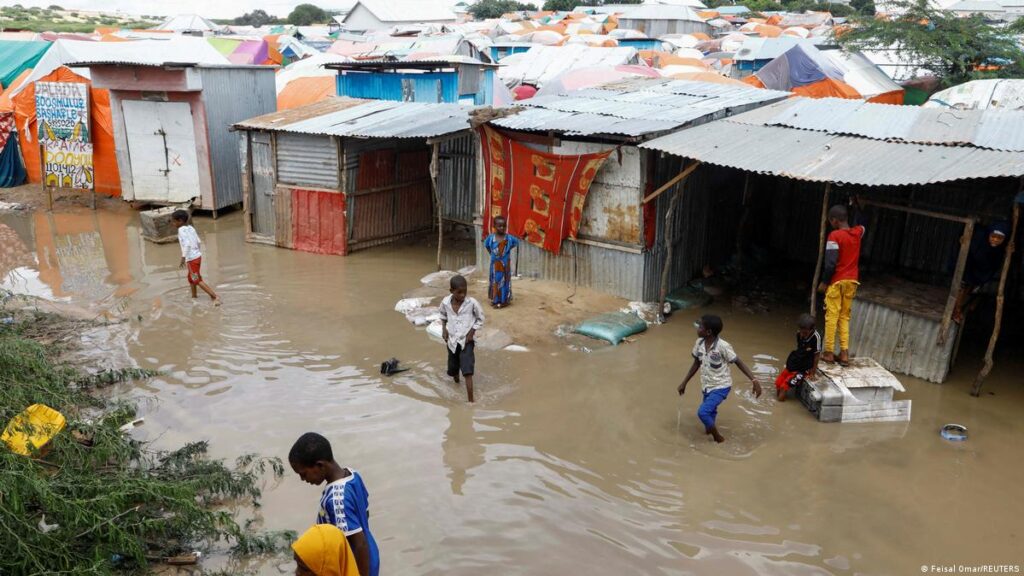Floods in Somalia Claims Lives and Displaces Hundreds of Thousands as the Horn of Africa Faces Unprecedented Humanitarian Crisis
Somalia is grappling with the aftermath of flash flooding caused by torrential rains, resulting in at least 50 reported deaths and displacing nearly 700,000 people from their homes. The situation, exacerbated by heavy rainfall and floods linked to the El Nino weather phenomenon, has led to widespread destruction of infrastructure, including bridges and residential areas.

The Somali Disaster Management Agency has declared a state of emergency as the death toll continues to rise, with fears that the expected rains between November 21st and 24th may lead to further flooding, death, and destruction.
The UN humanitarian agency OCHA reports that the number of displaced people has nearly doubled in just one week, affecting a staggering 1.7 million individuals. Roads, bridges, and airstrips have been damaged, hindering the movement of people and supplies and leading to increased prices of basic commodities.
International aid organizations, including Save the Children and World Vision, have sounded the alarm, highlighting the urgent need for global intervention. The floods have left more than 1.7 million people in “urgent need,” according to the International Rescue Committee, and with above-normal rainfall expected to persist until the end of 2023, the humanitarian situation is predicted to worsen.
The Horn of Africa, already vulnerable to climate change, now faces a “once-in-a-century” event, as termed by the UN, with extreme weather events occurring at an increased frequency and intensity. The region, recovering from the worst drought in four decades, is witnessing the destruction of homes, schools, and roads, leaving children without basic needs such as shelter, food, and clean drinking water.
Somalia’s Prime Minister, Hamza Abdi Barre, visited affected areas, expressing solidarity and determination to spearhead urgent humanitarian responses. However, the challenges are immense, with ongoing heavy rains and floods impacting transportation routes and making the delivery of emergency aid extremely challenging.
The 2023 Humanitarian Response Plan, seeking over $2.6 billion to assist 7.6 million people, remains significantly underfunded at 39%. The situation demands immediate action to bridge the financial gap and address the growing needs of those affected by this unprecedented disaster. With El Nino expected to persist until at least April 2024, the international community is urged to act swiftly to avert more severe outcomes and alleviate the suffering of the affected population.








